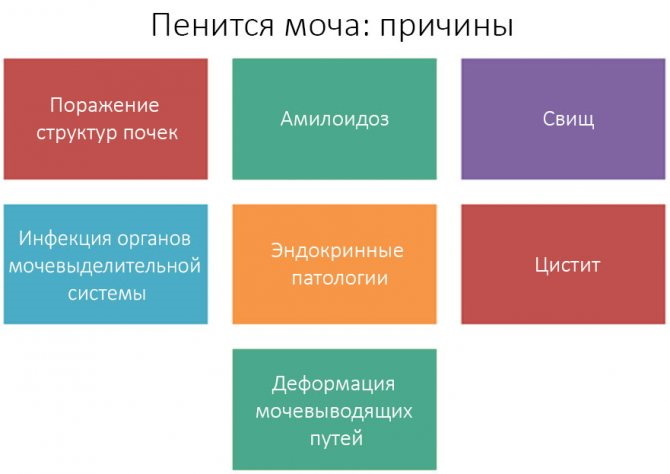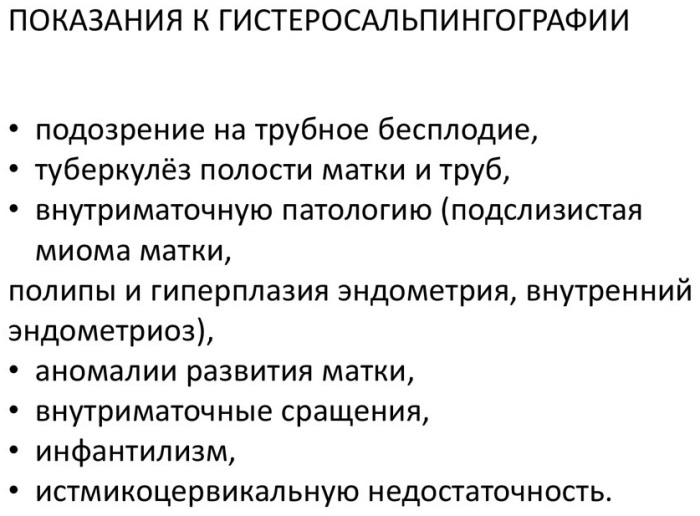Content
- What is the vestibular apparatus
- Why train him
- Exercises for children under 1 year old
- Light wiggle
- Circular motions
- Fitball exercises
- Airplane game
- Exercise machine swing
- Fun lap game "Over the Bumps"
- 1 to 2 years
- 1 to 5 years old
- Exercises for adults
- How to do it right at home
- Vestibular video
To give his body the correct position and orientation in space, a person needs a well-trained vestibular system. Such an apparatus is fully formed in the human body by the age of 15. And you can train him from birth. Even babies are allowed to perform such exercises.
What is the vestibular apparatus
In the inner ear of a person, in the region of the temple, there is a vestibular apparatus. This complex receptor receives dynamic and static signals.
It interacts with:
- cerebral cortex;
- cerebellum;
- spinal cord.
A properly functioning vestibular apparatus provides human movement with coordination and smoothness. But if it is weak, then the neurons are overexcited, which leads to the development of unpleasant sensations. Due to the imbalance of the vestibular analyzer, motion sickness may even appear.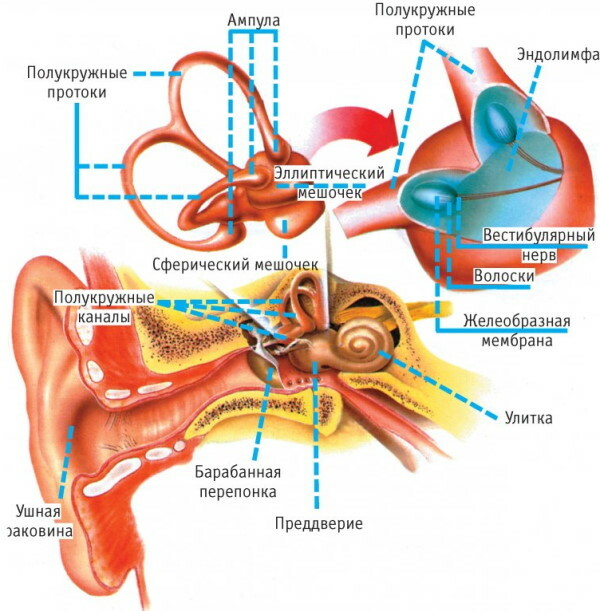
The following table provides more detailed information on the functioning of the vestibular system in humans:
| Who has a weakening of the vestibular apparatus | Symptoms arising from poor functioning of the vestibular organ | Signs of motion sickness with an untrained system |
|
|
|
The vestibular apparatus can be trained using various devices and objects. But there are exercises even without anything at all. These include different tilts and turns of the head. Classes are performed evenly and calmly. They are best done outdoors or in a ventilated area.
The vestibular apparatus coordinates:
- jumping;
- walking;
- run.
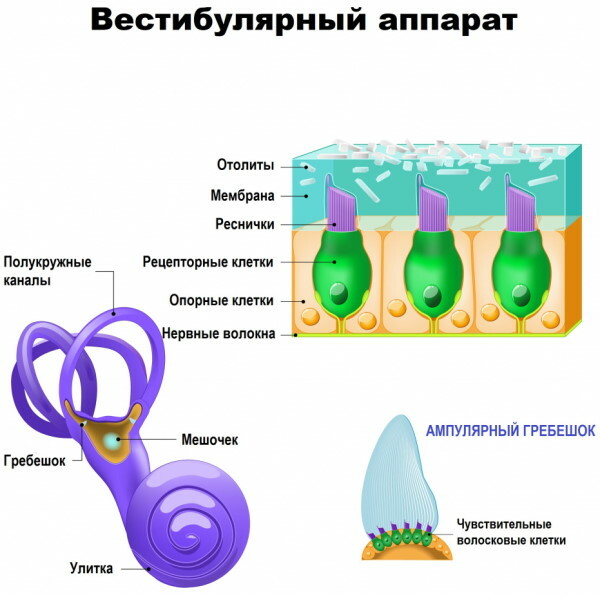
The organ responsible for balance and upright posture is part of a complex system that:
- coordinates movements;
- helps to navigate in space;
- maintains body position.
When a person tilts his head, the vestibular receptors become irritated. Because of this, the muscles that help the trunk to straighten are contracted. People with a normally functioning vestibular organ get so used to it that they don't even notice its daily work. But those who have this apparatus weakened begin to experience certain difficulties from its high sensitivity.
A healthy lifestyle improves the functioning of the vestibular apparatus. Almost all exercises to strengthen this organ can be done at home, and not in the gym. With a strong vestibular apparatus, human life becomes better. People with this organ, especially if it is strong, can ride any vehicle without motion sickness and dizziness.
It is necessary to train the vestibular apparatus for adults and children so that they do not feel sick or sick in a moving vehicle. The development of this organ allows people to navigate well in space and correctly correlate changes in the position of the torso and body with data that come from other sensory systems. Regular special exercises for the vestibular apparatus prevent the development of many diseases.
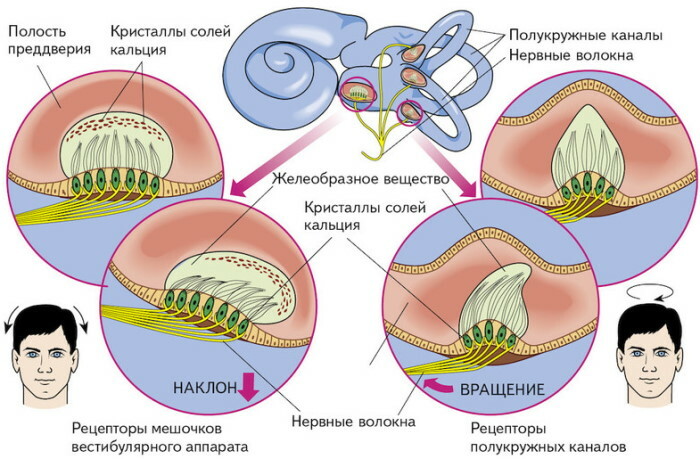
Children with weak vestibular apparatus behave as follows:
- do not like rotating and fast movements;
- avoid or be careful on the attractions of playgrounds;
- cannot jump on one leg or ride a bicycle normally;
- avoid elevators;
- escalators cannot do without handrails;
- walk carefully up the stairs and lean to the sides;
- quickly lose their balance even on the lowest surfaces.
Why train him
The goals of strengthening the vestibular apparatus are:
- getting rid of discomfort when walking or driving;
- improving the work of a complex system that is responsible for balance;
- strengthening the adaptation of the body to the irritating factors of motion sickness;
- prevention of exacerbations accompanied by unpleasant symptoms of imbalance.
Factors of vestibular dysfunction include:
- stroke;
- traumatic brain injury;
- otosclerosis;
- swelling of the inner ear;
- epilepsy;
- poisoning of the body;
- taking some medications;
- various tumors;
- too viscous blood;
- multiple sclerosis;
- vascular diseases.
Vestibular training can be carried out using the following aids:
- books and notebooks, they are held and carried on the head;
- attractions and swings;
- rocking chairs or hammocks;
- trampoline;
- skipping ropes and hoops;
- rotating disc.
Among the sports that allow the development of vestibular oran are:
- yoga;
- bandminton;
- oriental single combats;
- cycling;
- ball games;
- skateboarding;
- tennis;
- skating;
- acrobatics;
- gymnastics;
- dancing.
It is very important to train the vestibular apparatus for modern people who cannot tolerate restrictions. Strengthening this body system consists of simple exercises that are easy to perform even at home, outside the gym. Such workouts, lasting 15 minutes daily, take up little time. Their results become visible within a few weeks. But these complexes must be performed constantly.
Vestibular gymnastics helps:
- monitor the phenomena of disorders of the vestibular system;
- reduce the likelihood of injury when falling from dizziness;
- quickly get used to new things;
- Reduce or completely relieve nausea or dizziness
- easier to endure long trips;
- increased blood flow to the brain;
- enhance visual clarity;
- develop balance.
People with the following pathologies can engage in vestibular gymnastics:
- infectious;
- post-stroke period;
- ear diseases;
- suffered injuries of the spine and craniocerebral trauma;
- osteochondrosis.
Exercises for children under 1 year old
Infants with trained vestibular apparatus:
- begin to walk earlier than others;
- have high motor coordination;
- are distinguished by their dexterity.
Exercises for the development of the vestibular apparatus in children under 1 year of age:
- should start by simply wearing them in parental arms;
- perform with the obligatory control of the child's well-being;
- should last 15 seconds at first, and then gradually increase to 45 seconds;
- stop if the child is dissatisfied or starts crying.
Light wiggle
The child is held in the arms vertically or horizontally. Further, in this position, they begin to swing it from top to bottom, and then from left to right. Actions and movements should be smooth and comfortable for babies.
Circular motions
They take the baby in their arms and walk with him clockwise, and then against her. It is advisable to do this exercise without much rush so that the child's head does not spin. It is better to create a longer rotational amplitude.
Fitball exercises
The child is placed on the ball with his stomach or back down. When performing exercises, children should be carefully held by their sides or armpits with their hands.  After fixing the position, the fitball begins to gently swing in different directions. From 8 months, the child can already be put on the ball so that he jumps on it. But at the same time, parents should not forget to hold their children tightly by the arms or armpits.
After fixing the position, the fitball begins to gently swing in different directions. From 8 months, the child can already be put on the ball so that he jumps on it. But at the same time, parents should not forget to hold their children tightly by the arms or armpits.
Airplane game
The child is placed in his arms so that his face is looking down. Further, the parents imitate flying on an airplane, as if flying over the entire apartment. For variety, add air pockets, and also change the speed of flights.
Exercise machine swing
The lesson is carried out with children who have already learned to hold their heads. The parent sits on a chair or sofa. The child is laid with his stomach down towards himself on outstretched legs. Further, holding his hands, they begin to raise their lower limbs up or bend them at the knees.
Fun lap game "Over the Bumps"
The child, who is already 3 months old, is seated on his lap. Then they begin to throw him up or down, saying nursery rhymes. Sometimes he can be pushed off his knees a little, "into a hole", while not forgetting to hold the child tightly so that he does not really fall to the floor.
The vestibular apparatus should be trained with a small amount of exercises, constantly increasing their complexity and duration. At first, such training sometimes causes nausea and dizziness. But over time, the vestibular organ gets used to such loads, and these problems go away.
1 to 2 years
After the child has already learned to walk on his own, parents can try to perform with him a more complex complex with exercises aimed at strengthening the vestibular system.
With such already independent children, they do the following activities together:
- Cheerful steps. Both parents take the child by the hands and walk with him. Sometimes he is allowed to tuck his legs in order to sag in the air. At the same time, walking is not stopped.
- Swimming and diving. Exercises in the water or pool perfectly train the vestibular apparatus of any child. At the same time, children learn to control their bodies in space with the help of a thickness of liquid. After all, the body in water becomes much lighter than on land.
- Dancing. To the music, parents show their children how to:
- jump on one or the other leg;
- dance;
- squat;
- whirl.
1 to 5 years old
In order for the movements of children of this age to be confident and dexterous, it is recommended that they be offered the following exercises:
- Ordinary walking with coordination of the movements of the upper and lower extremities.
- Walking over sandboxes or curbs.
- Bend squats.
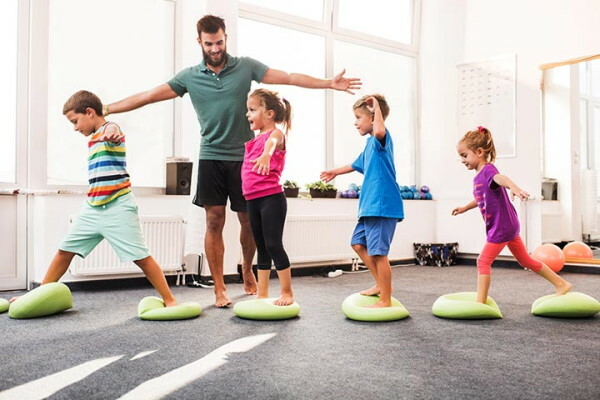
- Walking on benches or logs.
- Walking vertical stairs.
- Wearing objects on the head.
- Walking in a straight line with raised arms.
- Jumping off a bench or log.
- "Bridges" and "birches".
- “The sea is worried once,” during this game, the main participant, turning away from the others, says loudly: “The sea worries once, the sea worries two, the sea worries three, any figure freezes on the spot. " Participants freeze in a certain pose. The main player turns around and examines everyone. The first one to move turns into a driving participant or leaves the game. Competitions train balance and creativity in different life situations. Children use this game to learn self-control and patience.
- Competition "Yula", which perfectly trains the vestibular apparatus. In this case, the children are unwound on the spot. The constantly increasing amplitude of control develops tracking over coordination of movements and the ability to maintain balance.
- Games in "classics". This competition develops coordination and balance well.
The vestibular organ is just as important for children as it is for adults. This device, if it is well developed, protects any child from the harmful effects of various loads on the body while walking or driving. Therefore, this system in children is very important to train regularly.
Exercises for adults
Warming up exercises are performed before the training complex:
- walk around the room for about 7 minutes;
- swing the lower limbs;
- tilt the torso;
- rotate by hands.

After warm-up, do the following:
- They sit down on a chair and, for about 2 minutes, move their eyes from object to object.
- From a sitting position, the eyes are drawn in a circle in different directions.
- Then, for 2 minutes, they look first down and then up.
- While on a chair, hands alternately try to reach the toes of both feet.
- Sitting on a chair, turn the torso left and right.
- Further, they sit down facing the chair and holding on to its back, they begin to gently tilt their torso back.
- Sitting on a chair, straighten your back. The arms are bent at the elbow. The index finger is then placed in front of the face for a comfortable look. Then they look at him and turn their heads to the right and then to the left. Such movements are repeated 15 times in a row, gradually increasing their speed.
- For greater balance training in the process of training, walking along the walls is used.
- If the chair is rotating, then it is rotated several times on it. After stopping, the eyes fix some small object that does not move.
- Get straight. The head is tilted first forward and backward, and then to the right and left.
- Next, with the arms at the waist, the body is tilted back and forth.
- They sit on a chair and rotate the body clockwise and counterclockwise.
- The legs are brought together, and the arms are spread to shoulder height. In this position, they stand for 20 seconds, closing their eyes. After that, the hands are lowered along the body and stand like this for 3-5 seconds.
- Hands are extended to the sides and stand on tiptoe. Then they close their eyes and try to maintain balance in this position.
- They rise on their toes and throw their heads back. They keep their balance for a few seconds.
- Jump from one leg to the other with slow forward movement.
- They are raised and lowered onto a stack of books or a box pre-installed on the floor.
- Throw darts or play ball.
- They stand straight and walk backward, looking over their shoulder.
- The arms are extended forward and the eyes are closed. With the fingers of each upper limb, it is necessary to alternately reach the nose.
- Further, in the same position with straightened legs, they try to touch the hands.
- With the feet tightly pressed together and the arms set at the waist, the eyes are closed. In this position, 20 seconds remain.
- Standing on the floor on raised toes, they stay in this state for 15 seconds. Then close your eyes and count to 20.
- The feet are placed one in front of the other, heel to toe. Putting their hands on the waist, they look forward. 15 seconds remain in this position. After that, close their eyes and count up to 20 seconds.
- Standing straight, hands are placed on the waist. After that, the left leg is bent at the knee and pulled forward. Then they rise to the toe of the right leg and look forward. Then they count to 15. Then they close their eyes and remain in this position for 20 seconds.
- One foot is placed in front of the second. Hands are placed on the waist. After that, 6 swaying tilts to the right and left are performed with open eyes.
- The feet are set together, and the head is completely thrown back. At the same time, the eyes are left open and raised on their toes. They remain in this state for 15 seconds. Then they close their eyes and count to 10.
- They stand on tiptoes and slowly make 6 movements in a circle with their heads open in different directions. After that, the visual organs are closed and the exercise is repeated.
- They stand on the right leg, while the left leg is bent at the knee in front of them. After that, with the left hand, they grab the foot of the left leg and try to straighten it up. Then all the same movements are performed with the second lower limb.
- They become supported on 1 leg. After that, they lean forward while simultaneously pulling the other leg back. Both legs should be straight. In this position, 20 seconds remain.
- Standing straight, legs are placed together. At the same time, hands are spread to the sides. At the same time, the eyes are closed and stopped in this position for 30 seconds. Then the hands are lowered and remain so for 20 seconds.
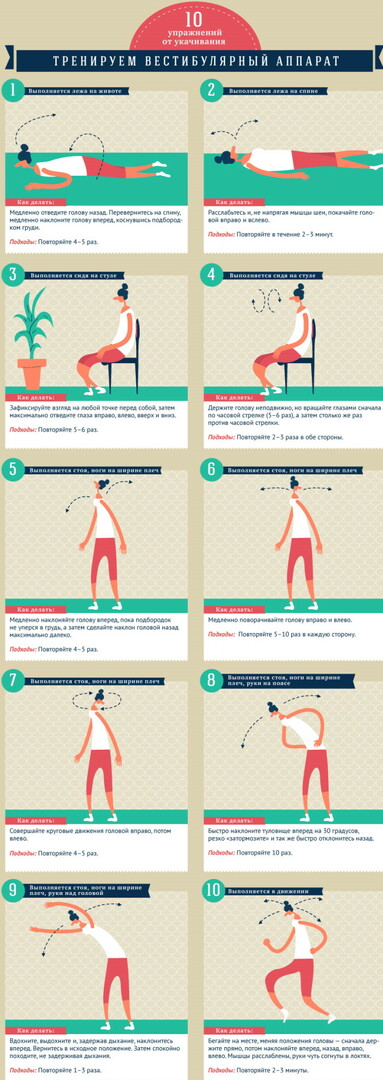 It is recommended to train the vestibular apparatus with small numbers of repetitions that do not cause negative effects. If unpleasant sensations appear, then the exercise is postponed. Some activities are best done at first with closed eyes. The training exercises are performed evenly and calmly.
It is recommended to train the vestibular apparatus with small numbers of repetitions that do not cause negative effects. If unpleasant sensations appear, then the exercise is postponed. Some activities are best done at first with closed eyes. The training exercises are performed evenly and calmly.
How to do it right at home
The rules for performing training of the vestibular apparatus include:
- The exercises are performed in comfortable clothes and positions.
- Classes in socks are performed on a special rug.
- Exercises are started only after visiting the attending physician.
- During infectious and colds, classes are not carried out.
- Exercises are performed slowly, constantly increasing the load.
- Classes are held 2 times a day (every 8 hours).
- The entire gymnastic course is performed for 1 or 2 months.
Upon completion of all classes on the development of the vestibular apparatus, breathing exercises must be performed. At the same time, they stretch their arms up, standing on their toes. Then they freeze. Then they again stand on their heels.
For the development of the vestibular apparatus, it is desirable:
- often walk outside, breathing in the air deeply;
- adhere to proper nutrition;
- go to bed on time;
- maintain water balance.
While walking along the streets, perform the following activities:
- walk on curbs with arms spread out to the sides;
- ride a swing until you feel dizzy;
- swing slowly in a hammock, being in the country or outside the city;
- go backwards.
For more effective training of the vestibular apparatus, the following are required:
- outdoor activities (this is best done before bedtime);
- breath control;
- consistency, it helps to achieve all goals (constant training allows the body to adapt to changing conditions).
The balance and coordination of movement in humans is regulated by the vestibular organ located in the ear. Good balancing in space depends on his work. The excellent functionality of this device prevents household injuries in children and adults. But for this he needs to be trained on an ongoing basis.
Vestibular video
The structure and functions of the vestibular analyzer:

